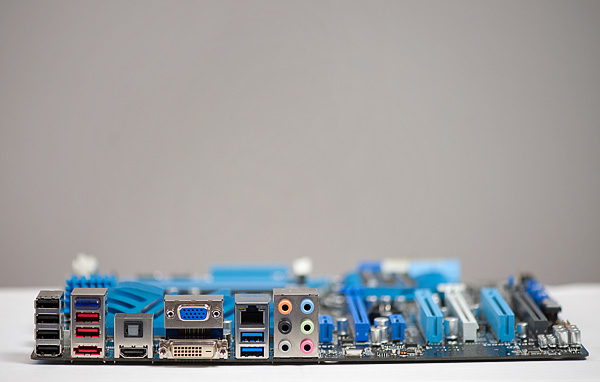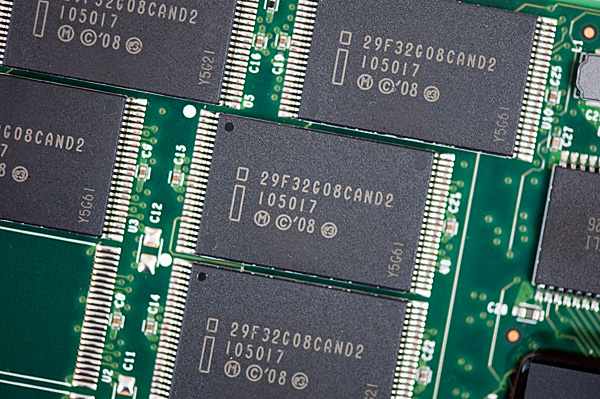Intel Z68 Chipset & Smart Response Technology (SSD Caching) Review
by Anand Lal Shimpi on May 11, 2011 2:34 AM ESTFinal Words
Intel's Z68 should have been the one and only high end launch chipset offered with Sandy Bridge. It enables all of the configurations we could possibly want with Sandy Bridge and does so without making any sacrifices. Users should be able to overclock their CPU and use integrated graphics if they'd like. While Z68 gives us pretty much exactly what we asked for, it is troubling that we even had to ask for it in the first place. With Intel holding onto a considerable performance advantage and a growing manufacturing advantage, I am worried that this may be a sign of things to come. It was strong competition from AMD that pushed Intel into executing so flawlessly time and time again, but it also put Intel in a position where it can enforce limits on things like overclocking. Let's hope that Z68 corrected a mistake that we won't see repeated.
Intel's Smart Response Technology (SRT) is an interesting addition to the mix. For starters, it's not going to make your high end SSD obsolete. You'll still get better overall performance by grabbing a large (80-160GB+) SSD, putting your OS + applications on it, and manually moving all of your large media files to a separate hard drive. What SRT does offer however is a stepping stone to a full blown SSD + HDD setup and a solution that doesn't require end user management. You don't get the same performance as a large dedicated SSD, but you can turn any hard drive into a much higher performing storage device. Paired with a 20GB SLC SSD cache, I could turn a 4-year-old 1TB hard drive into something that was 41% faster than a VelociRaptor.
If you're building a system for someone who isn't going to want to manage multiple drive letters, SRT may be a good alternative. Similarly, if you're building a budget box that won't allow for a large expensive SSD, the $110 adder for an Intel SSD 311 can easily double the performance of even the fastest hard drive you could put in there. The most obvious win here is the lighter user that only runs a handful of applications on a regular basis. As our tests have shown, for light workloads you can easily get the performance of an X25-M G2 out of a fast hard drive + an SSD cache. Even gamers may find use in SSD caching as they could dedicate a portion of their SSD to acting as a cache for a dedicated games HDD, thereby speeding up launch and level load times for the games that reside on that drive. The fact that you can use any SSD as a cache is nice since it gives you something to do with your old SSDs when you upgrade.
I believe there's a real future in SRT, however it needs to be available on more than just the highest end Sandy Bridge motherboards. I'd like to see SSD caching available on all Intel chipsets (something that we'll get with Ivy Bridge and the 7-series chipsets next year), particularly on the more mainstream platforms since that appears to be the best fit for the technology. I would also prefer a larger cache drive offering from Intel (at least 40GB) as it wasn't that difficult to evict frequently used programs from the SSD cache. The beauty of NAND is that we'll of course get larger capacities at similar price points down the road. Along those lines I view SRT as more of a good start to a great technology. Now it's just a matter of getting it everywhere.












106 Comments
View All Comments
cbass64 - Wednesday, May 11, 2011 - link
Who says you can't use your old 100 or 256GB SSD as an SRT device? The article clearly states that you can use whatever size drive you want. Up to 64GB of it will be used for cache and the rest can be used for data. If you have more than 64GB of data that you need to have cached at one time then SRT isn't the solution you should be looking into.As for OS limitations...you can't seriously think Intel would wait until they had this running on every platform imaginable before they released it to the public, can you? This is the first version of the driver that supports it so of course it will have limitations. You can't expect a feature of a Windows-only driver to be supported by a non-Windows OS. I'm sure this feature will be available on Linux once Intel actually makes a Linux RST driver.
futrtrubl - Wednesday, May 11, 2011 - link
And don't forget that if you don't partition the rest of the space on the SSD it will use it for wear levelling, which will be even more important in this situation.Shadowmaster625 - Wednesday, May 11, 2011 - link
I still dont get why western digital doesnt take 4GB of SLC and solder it onto the back of their hard drive controller boards. It's not like they dont have the room. Hopefully now they will do that. 1TB +4GB SLC all for under $100 in one package, with 2 sata ports.mamisano - Wednesday, May 11, 2011 - link
Seagate has the Momentus 500gb 7200rmp drive with 4GB SLC. It's in 2.5" 'Notebook' format but obviously can be using in a PC.I am wondering why such a drive wasn't included in these tests.
jordanclock - Wednesday, May 11, 2011 - link
Because, frankly, it sucks. The caching method is terrible and barely helps more than a large DRAM cache.Conficio - Wednesday, May 11, 2011 - link
What is the OS support on those drivers (Windows?, Linux?, Mac OS X?, BSD?, Open Source?, ...)?Does the SRT drive get TRIM? Does it need it?
"With the Z68 SATA controllers set to RAID (SRT won't work in AHCI or IDE modes) just install Windows 7 on your hard drive like you normally would."???
Is there any optimization to allow the hard drive to avoid seeks? If this all happens on the driver level (as opposed to on the BIOS level) then I'd expect to gain extra efficiency from optimizing the cached LBAs so as to avoid costly seeks. In other words you don't want to look at LBAs alone but at sequences of LBAs to optimize the utility. Any mention of this?
Also one could imagine a mode where the driver does automatic defragmentation and uses the SSD as the cache to allow to do that during slow times of hard drive access. Any comment from Intel?
Lonesloane - Wednesday, May 11, 2011 - link
What happened to the prposed prices? If I remember correctly the caching drive was supposed to cost only 30-40$?Now with 110$, the customer should better buy a "real" 60GB SSD.
JNo - Thursday, May 12, 2011 - link
+1It's interesting, Anand has a generally positive review and generally positive comments. Tom's Hardware, which I generally don't respect nearly as much as Anand, reviewed SRT both a while back and covered it again recently and is far less impressed as are its readers. I have to say that I agree with Tom's on this particular issue though.
It is *not* a halfway house or a cheaper way to get most of the benefit of an SSD. For $110 extra plus the premium of a Z68 mobo you may as well get an SSD that is 40-60GB bigger than Larson Creek (or 40-60GB bigger than your main system SSD) and just store extra data on it directly and with faster access and no risk of caching errors.
For those who said SRT is a way of speeding up a cheap HTPC - it doesn't seem that way as it's not really cheap and it won't cache large, sequential media files anyway. For those who said it will speed up your game loadings, it will only do so for a few games on 2nd or 3rd run only and will evict if you use a lot of different games so you're better off having the few that count directly on the SSD anyway (using Steam Mover if necessary).
For your system drive it's too risky at this point or you need to use the Enhanced mode (less impressive) and to speed up your large data (games/movies) it's barely relevant for the aforementioned reasons. For all other scenarios you're better off with a larger SSD.
It's too little too late and too expensive. The fact that it's not worth bothering is a no brainer to me which is a shame as I was excited by the idea of it.
Boissez - Wednesday, May 11, 2011 - link
Could one kindly request for the numbers from both the 64GB C300 and 20GB sans harddisk 311 to be added. It would give a good idea of the performance hit one could expect for using these in SRT vs as a standalone boot drive.Boissez - Wednesday, May 11, 2011 - link
First sentence should be: "Could one kindly request for the numbers from both the 64GB C300 and 20GB 311 sans harddisk to be added?"... sorry